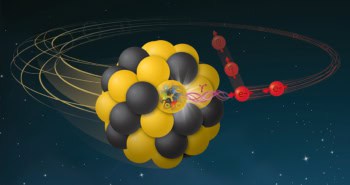James McKenzie wonders if a commercial approach will bring a practical fusion reactor to market faster
I recently attended a two-day event at the Royal Society in London on using tokamaks as a fusion-energy source. People have, of course, been working on fusion for years – even TV pioneer Philo Farnsworth, whom I mentioned in last month’s column, developed a prototype reactor, called the “fusor”, back in the 1960s. But why has fusion proved so hard to harness here on Earth? As people often like to ask, why is fusion always 30 years away?
Why has fusion proved so hard to harness here on Earth? As people often like to ask, why is fusion always 30 years away?
You only need to look up to the Sun for proof that fusion works. Achieving it here on Earth is just an engineering problem, right? Simply fuse two nuclei together to make a bigger atom, which releases four times as much energy as fission. A lot of smart people are working on fusion and a lot of money has been spent. So why don’t we have clean, cheap fusion power right now?
The problem, as I quickly realized from the Royal Society meeting, is getting the nuclei close enough for long enough for fusion to occur. That will happen only if you can exceed a figure of merit known as the “triple product” of heat, confinement density and time. Some amazing approaches have been adopted to solve this problem including huge superconducting magnets, massive pulsed lasers, fused ion beams and mechanical rams.
Many have achieved fusion, but that’s not enough. What you want is to generate more energy than is used to start the reaction. No-one has yet reached “breakeven”, but when we do, we’re on the road to generating power. Most of the world’s effort is on doughnut-shaped reactors called tokamaks, which usually employ the tritium reaction – heavy hydrogen – to produce helium, energy and fast-moving neutrons.
The Royal Society event showcased a bewildering list of engineering and physics challenges, including achieving temperatures of way above 5×107 K in a low-vacuum plasma and confining it using high-performance superconductors to generate a fusion reaction. This, in turn, involves cooling superconducting magnets to below 30 K even though they’re barely 300 mm from the hot plasma.
What you build is important because materials hit by high-energy neutrons released by the fusion reaction change over time. Nickel in stainless steel, for example, transforms into cobalt-60. So how should you shield the reactor walls from these neutrons? And how do you perform maintenance on the reactor, given that it has now become highly radioactive? The challenges are immense. But so are the rewards.
Smaller is better
The quest for fusion reminded me of the time I worked for an optical company in the 1990s when the race was on to deliver lower-cost integrated optics components. I was involved in other products but also sat in on engineering meetings attended by a much bigger group of colleagues, who had to fulfil a huge, multi-million dollar order for lots of telecoms components.
The customer had been given a spec sheet and some PowerPoint roadmap slides, but after many iterations, which involved working on several tricky problems in parallel over the course of a year or so, little progress had been made. Improving the design in one area simply made things worse in another and they still didn’t have a prototype that was up to spec – let alone a manufacturable product.
I envisaged a different approach. No-one in the team wanted to hear it but – undeterred – I spoke to the company’s chief executive, who asked me how long my idea would take. When I replied “six weeks or so”, the next thing I knew, I was running a team to put my idea into practice. My tactic was to focus on the specification and the application, not the utopian PowerPoint picture. So I hopped on a plane and presented a mock-up of the new product to the customer, who said it was exactly what they wanted. The team delivered a prototype just three weeks after that – and the customer liked it too.
Our company’s philosophy thereafter was to develop the “minimal viable product” and do so faster. It proved successful for the firm. All I did was change the number of problems we tackled at once. What we built wasn’t perhaps as small or as cool as the original PowerPoint vision, but it worked.
Business brains
So what has this got to do with fusion? Well, the current global fusion effort is the $18bn ITER experimental reactor being built in France. It’s a multinational, “big-science” affair, involving China, the EU, India, Japan, Russian, South Korea and the US. The latest plan is for ITER to come on line in 2025 and that, by 2035, it should point the way to a commercial fusion reactor (DEMO), which would then be built and connected to the electricity grid by 2060.

Intellectual property
But to build enough of these reactors to get past 10% of global demand could take until the end of the century. This strikes me as a little too late. I see more hope from the business sector. Firms such as Tokamak Energy, TAE Technologies, General Fusion, Lockheed Martin and Commonwealth Fusion Systems seem to be iterating on shorter timescales to home in on economically viable, smaller reactors. Tokamak Energy, for example, believes it will have production reactors by 2030 by iterating designs on timescales of a few years.
So who will get there first: the commercial hares or the big-science tortoises? I know which my money is on.
- Enjoy the rest of the June 2018 issue of Physics World in our digital magazine or via the Physics World app for any iOS or Android smartphone or tablet. Membership of the Institute of Physics required




